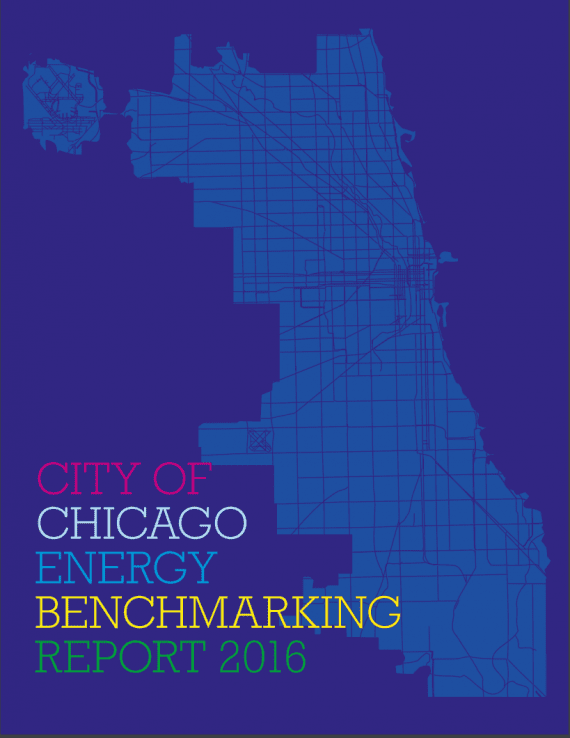

Quick – pop quiz!
Which sector in the U.S. uses the most produced energy?
A) Transportation
B) Industry
C) Buildings
The correct answer? It’s C) Buildings. Surprised? Most people are!
In fact, as of 2013, buildings in the U.S. used almost half (~48%) of the energy that was produced.[1] That includes all single-family homes, multi-family buildings, and commercial buildings. Think about the sheer number of buildings in the U.S. Buildings, unlike cars, aren’t usually replaced – we construct more and more buildings and add to the existing building stock. So, if we want to get real about tackling the amount of energy that the U.S. consumes every year, we have to work with existing buildings to reduce their energy use. This is why many cities across the U.S – including Chicago – have adopted energy benchmarking ordinances that focus directly on the largest consumers of energy – the largest buildings – within the building sector.
The next question you may have is, what exactly is benchmarking? In a nutshell, there’s a saying we like to say in this industry – “You can’t manage what you don’t measure.” That is, by having an awareness of and tracking a building’s energy use and comparing them to other buildings of similar type and size, steps can be taken to reduce their energy use. With the Energy Benchmarking Ordinance, the City of Chicago, therefore, is looking to encourage more buildings to take action towards becoming more energy efficient (thereby saving energy and costs!) once they understand how much energy they are using.
To dig into the Chicago Energy Benchmarking, we first should mention that it has three requirements:

The Benchmarking Ordinance in Chicago has now been in effect for 3 years, and the City released the 2016 Energy Benchmarking Report a few weeks ago. 2016 was a big year for the ordinance because it was the first year that the compliance was in effect for all buildings that are covered under the ordinance (the ordinance was phased in over 3 years and included more and more buildings every year based on type and size). Here is a quick snapshot of interesting facts that I learned from the 2016 report:
♦ Approximately 3,500 properties across the City of Chicago are covered under the Ordinance. These properties consume 23% of the energy use in the city!
♦ Approximately 2,700 properties, which make up about 750 million square feet, benchmarked and reported to the City. By number of buildings, this equated to an 80% compliance rate. This rate is similar to that of other large cities that require energy benchmarking as well.
♦ The 1,200+ buildings that have benchmarked and reported for 2-3 years have saved $17.8 million in energy savings thus far!
♦ Reported energy information for buildings that were covered by the ordinance for 2 years are publicly shared. You can access that info here.
The Energy Benchmarking deadline to benchmark 2016 energy-use data is coming up on June 1, 2017.

The City of Chicago sent notifications to each building that is required to comply in mid-March. What should you do now that you have received the notification? You will need to begin preparations to benchmark your building. Cyclone Energy Group can help you with this by:
Contact us now at workwithus@cyclone.energy!
[1] Architecture 2030 – Why the Building Sector?
Phone: 312-945-8443
Email: workwithus@cyclone.energy
815 S Wabash Ave
Chicago, IL 60605
615 S. College Street, 10th Floor
Charlotte, NC 28202